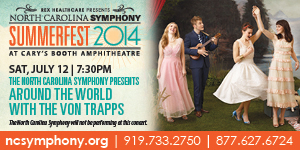 Friday night, the Charlotte Symphony Orchestra (featuring the string sections only) streamed two Romantic works written within ten years of each other. Opening the concert were the first six Liebeslieder Waltzes, Op. 52 (1869), by Johannes Brahms (Germany, 1833-1897). Serenade for Strings, Op. 22 (1875) by Antonín Dvořák (Czechia, 1841-1904) closed the evening. At the podium was CSO music director Christopher Warren-Green.
Friday night, the Charlotte Symphony Orchestra (featuring the string sections only) streamed two Romantic works written within ten years of each other. Opening the concert were the first six Liebeslieder Waltzes, Op. 52 (1869), by Johannes Brahms (Germany, 1833-1897). Serenade for Strings, Op. 22 (1875) by Antonín Dvořák (Czechia, 1841-1904) closed the evening. At the podium was CSO music director Christopher Warren-Green.
Before the ensemble of 20+ players performed, all masked and sitting apart from one another, resident conductor Christopher James Lees gave some opening remarks, “a glimpse into” the music we were about to hear.
The Liebeslieder Waltzes were originally written for vocal quartet and four-hand piano. They were subsequently arranged, by Brahms and by others, for various ensembles. This string arrangement was by Friedrich Hermann (Germany, 1828-1907).
The opening “Im ländler tempo” contains an oom-pah-pah accompaniment over which a lilting waltz melody is presented by the first violins. Maestro Warren-Green nicely brought out the cross rhythms in the second violins, later passed to the violas.
“Piu agitato” is more aggressive in nature, more gypsy sounding. The conductor’s stately manner belied the seething mood of the music, a testament to the fine rehearsals that must have taken place in preparing for the concert. Indeed, it seemed as if many of the changes in dynamics had been previously worked out, as the conductor gave more character and tempo indications than those dealing with soft and loud throughout the concert.
The third waltz, in the same tempo as the opening, takes a more elegant stand, while the fourth returns to the dance-feel. The fifth waltz, the only one of the six in a minor mode, provides a darker foil. The sixth “Grazioso” waltz is the only one of the six not in a two-part form; it is in a rondo form, with a main, delightfully elegant theme returning several times.
Throughout the set of six, ensemble was remarkably tight, good dynamic contrasts added a lot of color, and intonation was spot on.
Dvořák’s Serenade for Strings is in five movements. According to Lees, the opening “Moderato” is “not a rip-roaring opening [as one might expect]…, but a gentle, lyrical, beautiful, and intimate set of melodies passed around the entire string section of the orchestra.” Indeed, the opening is calm, with the second violins first presenting the charming melody, which is echoed by the celli, before it moves into the first violins. A dotted-note rhythm in the middle section provides contrast.
The second movement, “Tempo di Valse,” according to Lees, “begins as a waltz, this time in a minor and severe tone.” I found it to be more yearning in character, lovingly played. The juxtaposition of the Trio’s dance-like character was striking.
The third movement “Scherzo: Vivace” was played with exciting energy. A more intimate section within the movement offers some drop-dead gorgeous melodies before returning to the opening material.
Lees: “The fourth movement [Larghetto], is also very lyrical, slow, sort of somber” with sections that “bask in Bohemian sunshine.” The slow sections were tenderly beautiful; the faster portions, perky and mysteriously animated. Often Warren-Green would use his hands rather than the baton to plead for the inherent beauty.
“The last movement is full of momentum and fireworks. The Finale begins with great energy and continues all the way until the last moment of the piece. The only moment this energy is interrupted is towards the very, very end. We hear the same music that we heard at the opening of the serenade…, a journey from home ultimately back home.”
The CSO strings played the movement with great energy. Several passages of contrasting character make the work engaging. Here and throughout the evening, intonation and ensemble were impeccable, a testament to the musicianship of the CSO’s string section.











